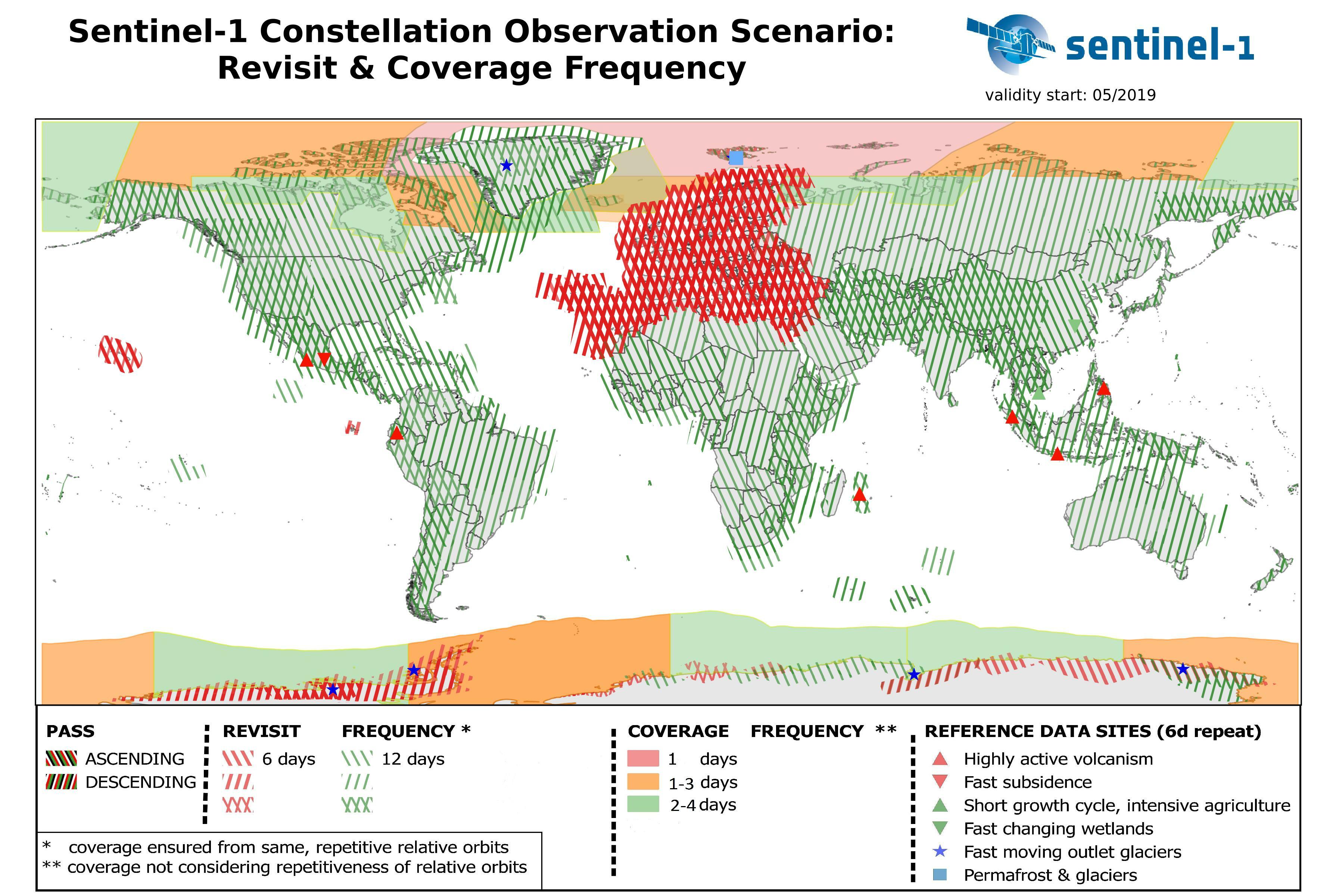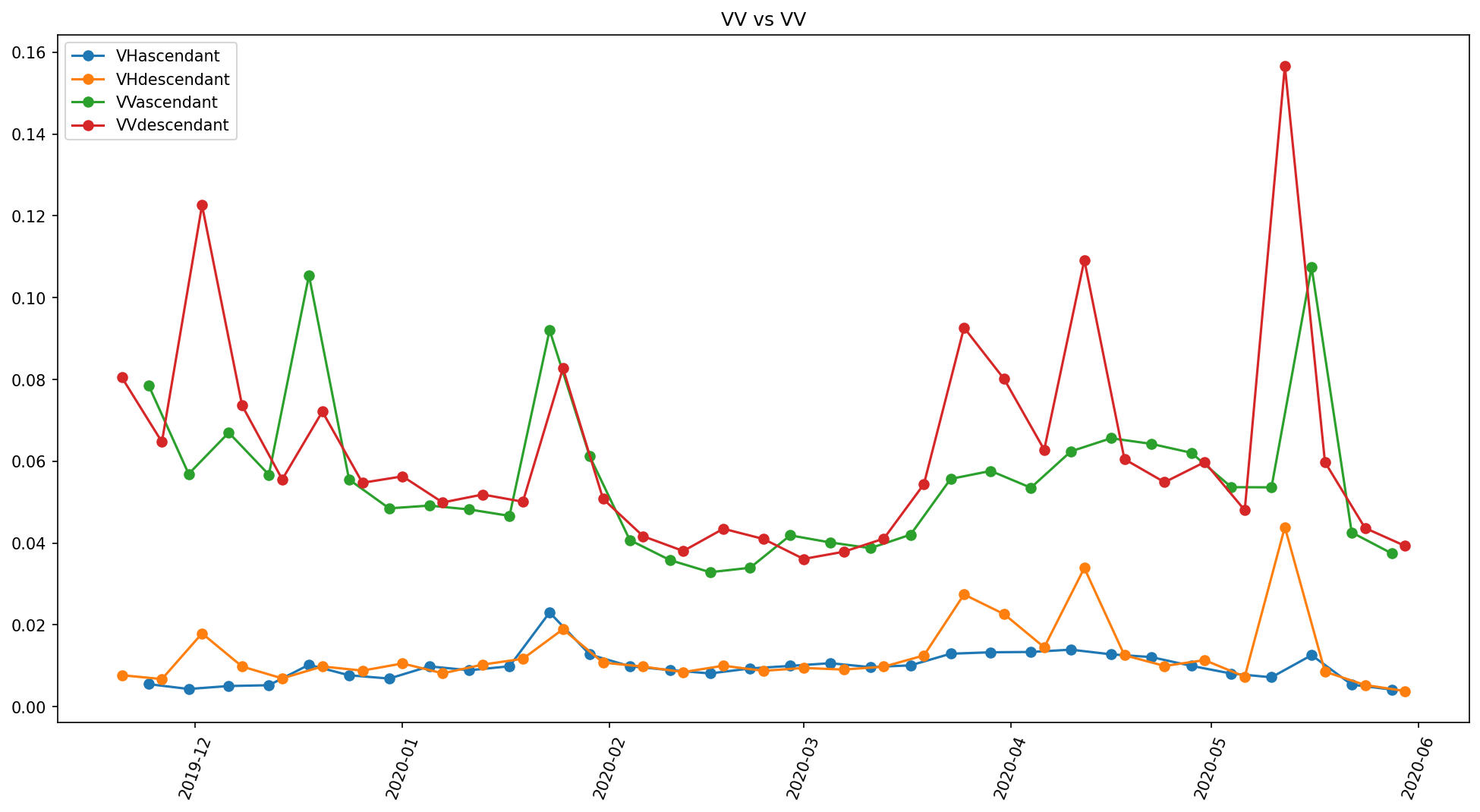Hi all !
I’m currently working on fetching Sentinel-1 data from some plots in Morocco with the EO Browser API. We’re fairly new on S1 data and have a few questions to which we could not find answer in the FAQ and other online ressources.
Our main questions are about orbits and their temporality. Our ROI is in northern Morocco. According to this map, data on our ROI can have ascending and descending orbits and have a revisit period of at least 6 days (red criss-crossed pattern below).
- Is there a way to know which Sentinel-1 satellite took the data? i.e. A or B? This metadata is available for Sentinel-2 but we could not find it for S1.
- Our ROI is on several orbits, as we get descending and ascending data on the same days, on rare occasions. When that happens for S2 data, we would just take the mean from both observations and accept it. However, it does not seem like a good approach for backscatter data. How could we handle those situations well? Is averaging acceptable for S1 radio data, even more when it’s not from the same orbit direction?
- Talking about orbit direction: we read that for non-plane ROI, the orbit direction has an impact on the data collected. Does this mean the data has to be treated separately? We want to use S1 data for timeseries and saw that, indeed, we had sometimes some severe changes between ascendant and descendant orbit, as shown below:
plotted example of our data: VV data has been averaged per date, and here are displayed only the dates for which mean dataMask = 1. No speckle correction here.
On another subject (maybe I should make another topic?):
- It is recommended to use a speckle filter even with GRD data. We know some exist spatially (such as Lee filter and so on), but we were wondering if a temporal smoothing (here using Savitsky-Gollay algorithm) could also do the work?
Here is my input task:
input_task = SentinelHubInputTask(
data_collection=DataCollection.SENTINEL1_IW,
bands_feature=(FeatureType.DATA, 'GRD_data'),
additional_data=[(FeatureType.MASK, 'dataMask'),(FeatureType.MASK, 'shadowMask'),
(FeatureType.DATA, 'localIncidenceAngle'),(FeatureType.DATA, 'scatteringArea')],
resolution=resolution,
maxcc=maxcc,
config=config,
max_threads=3,
aux_request_args={'dataFilter': {'acquisitionMode': 'IW', 'orbitDirection': orbit_direction},
'processing': {'backCoeff': 'GAMMA0_TERRAIN','orthorectify': True}}
)
Thanks for reading me !



